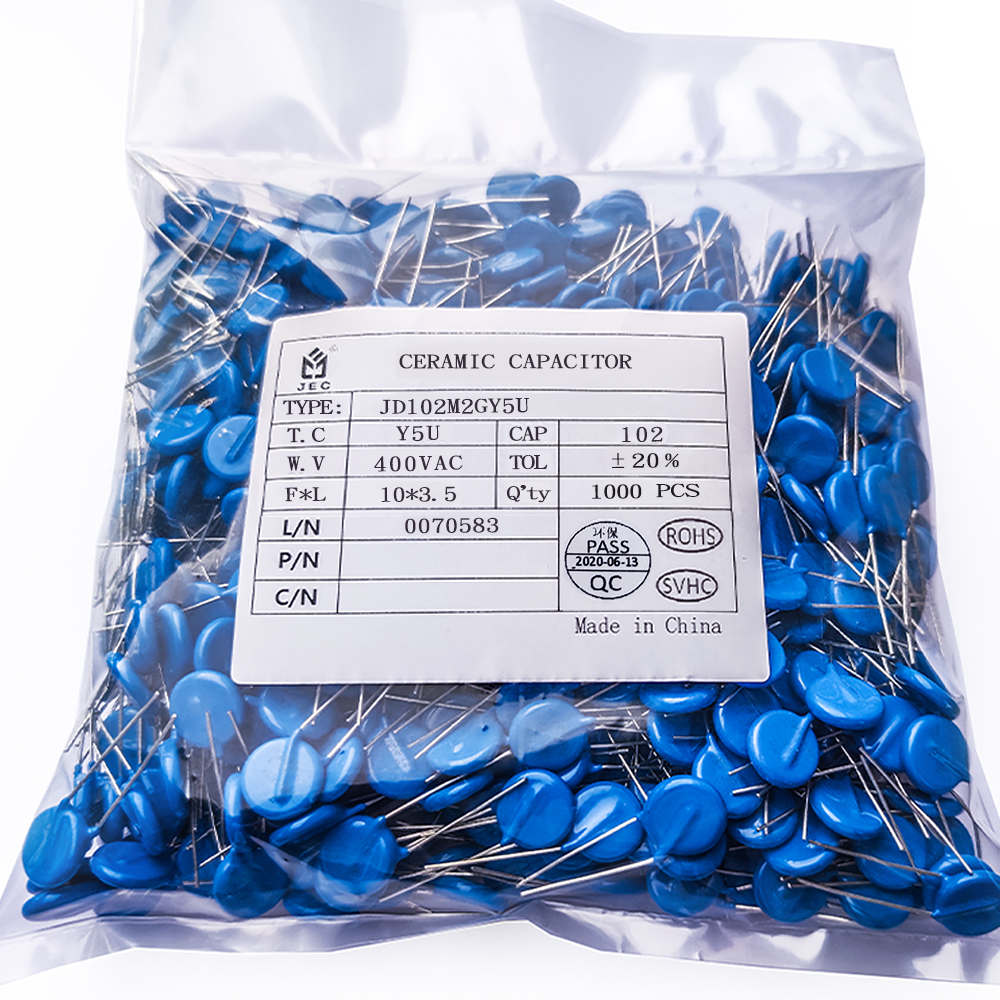Safety capacitors, composed of X capacitors and Y capacitors, primarily serve as power filters within circuits, effectively filtering common mode and differential mode interference.
Role of Safety Capacitors in Circuits
Typically, three safety capacitors are required to suppress conducted interference from EMI in the AC power input terminal. The AC power input comprises three terminals: line (L), neutral (N), and ground (G).
The capacitors connected between the line and ground, and between the neutral and ground, are generally referred to as Y capacitors. The positioning of these two Y capacitors is crucial and must comply with relevant safety standards to prevent leakage currents or charged equipment casings, which could endanger human life. They are considered safety capacitors, requiring moderate capacitance values and high voltage tolerance. In machines operating in subtropical regions, the leakage current to ground must not exceed 0.7mA, while in temperate machines, it must not exceed 0.35mA. Therefore, the total capacitance of Y capacitors generally should not exceed 4700pF (472). What are the differences between safety capacitors and regular capacitors?
The capacitor connected in parallel between the line and neutral for suppression is commonly referred to as the X capacitor. As the positioning of this capacitor is also critical, it must meet relevant safety standards and is likewise considered one of the safety capacitors. Depending on requirements, the capacitance value of X capacitors may exceed that of Y capacitors, but in such cases, a safety resistor must be connected across both terminals of the X capacitor to prevent prolonged charging and discharging of the capacitor during power line insertion and removal. Safety standards dictate that when a machine’s power cord is disconnected during operation, the voltage (or potential to ground) at both ends of the power plug must be less than 30% of the original rated operating voltage within two seconds.
How to Select Qualified Safety Capacitors
When safety capacitors are used in circuits, leakage can be measured using a multimeter. High-quality capacitors will have minimal or no leakage, while lower-quality ones tend to exhibit significant leakage.
Observing the machine’s operational status is also helpful. When high-quality safety capacitors are installed, the machine will operate stably with a low failure rate. Additionally, increasing the load on the machine to the limit that the capacitor can withstand and observing stable operation confirms the capacitor’s quality. Conversely, if issues arise, it’s likely due to inferior capacitors made from substandard materials, with parameters often being falsely labeled and unable to withstand the specified current or voltage.
This article is provided by JYH HSU (JEC) Electronics. JEC is a research, development, production, and sales-oriented company specializing in manufacturing and selling various electronic components such as capacitors and resistors.
Post time: Apr-07-2024

